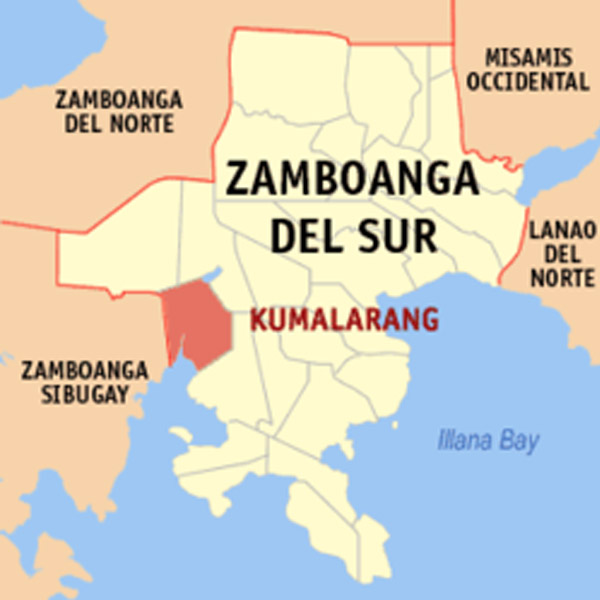In 2017, we commemorated the 600th year of the historical visit of Sulu Sultan Paduka Batara to Peking. By next year, 2020, it will be the 600th anniversary of another historical visit to Peking by another Filipino king, the Sultan of Kumalarang in Basilan.
Sultan Batara’s visit to Peking in 1417 and his death and burial in Dezhou, Shandong months later are fairly known to both Filipinos and Chinese. The visit of the king of Kumalarang in 1420, however, is less known except to some historians.
Just like Sultan Batara, this king died in China on his way home – in Fuzhou, Fujian province. Unfortunately, unlike Sultan Batara’s, the tomb of the king of Kumalarang in Fuzhou was destroyed in the 1950s during a development construction.
It was actually by accident that we discovered additional information about the visit of the king of Kumalarang to China as we were looking at Wikipedia for reference materials on Isabela City of Basilan in connection with the Jan. 21 plebiscite on the Bangsamoro Organic Law.
Earlier, we have obtained historical records from various Chinese annals of the Ming Dynasty on the visit of the king of Kumalarang and the relations between Kumalarang and the Ming Court. These include the Ming Annals (明史), Ming Records (明實錄) and Ming Summary (明會要) which in all contained 14 citations on Kumalarang. Nevertheless, we lack detailed narrations on this visit of this king, unlike the detailed ones we have on Sultan Batara’s trip.
To our pleasant surprise, Wikipedia cites a detailed report, Da Ming Hui Dian (大明會典 Complete Compilation of Literary Works of Great Ming), about Kumalarang drawn from the records of Tehchow (Dezhou), Shantung (Shandong), China, archived and researched in 1673, 1788 and 1935.
The Wikipedia article on Isabela, Basilan includes the caveat, “This article needs additional citations for verification.”
But we are sharing pertinent information about Kumalarang it provides since we don’t have the opportunity to access the original text of Da Ming Hua Dian.
We also wonder why the pertinent records on Kumalarang were not included in 中國古籍中有關菲律濱資料匯編(Compilation of Materials on the Philippines in Chinese Ancient Books) released by Zhong Shan University in 1981.
Below are excerpts from the Wikipedia article. We have supplied the Chinese translations for the names and annotations in parenthesis.
Three months after the death of Paduka Batara (the Tausug potentate who visited the Chinese Emperor Yong Le (永樂) and died on October 23, 1417), a High Court Mandarin , Chan Chien (張謙), was ordered to sail to Kumalarang (Chinese texts refer to “Kumalalang <古麻剌朗>”), a vassal state of the Sulu Sultanate located on the northwestern coast of Taguima (Basilan Island).
Chan Chien was received by Lakan Ipentun (Ch. ref. “Kanlai Ipentun [斡剌義亦奔敦]),” presumably a Yakan prince, who ruled the kingdom as a vassal to the Sultan of Sulu.
The Mandarin official stayed in Kumalarang for two years before returning to China. (This information we never knew before and needs verification).
He was accompanied by Lakan Ipentun and an entourage of several hundred, composed of his immediate family, minor chieftains (datus), and servants. They were finally given an audience with the Chinese Emperor on Nov. 16, 1420 where he formally asked the latter to proclaim him as a recognized sovereign and vassal to the Dragon Throne.
Lakan Ipentun wrote a missive to the Chinese Emperor on Dec. 28, 1420, complaining about the time it took for the Chinese Emperor to act on his request.
The Chinese Emperor received the petition and finally granted Lakan Ipentun with the title of “wang” (王 king).
After his request was granted, a satisfied Lakan Ipentun, along with his entire retinue, started for home.
On May 27, 1421, however, unaccustomed to the cold climate of the preceding winter and due to his advancing age, Lakan Ipentun died in Fujian, China, just as they were about to embark on Chinese junks that would have brought them home.
His funeral was supervised by Yang Shan (楊善), administrator of the temples, and was likewise honored by a eulogy sent by the Chinese Emperor which extolled his virtues of “determination and serenity.”
His son, Lapi (剌苾), was then proclaimed as rightful successor to the just bestowed title of “wang.” Lapi sent one of his father’s most trusted officials, Batikisan (叭啼吉三), to petition for an audience with the Chinese Emperor where he presented a “memorial” in gold plaque on Nov. 3, 1424.
The party, with its newly proclaimed king, eventually returned to Kumalarang, and almost just as promptly faded from the historical records of the period. (Kumalarang was revived as a barangay located on the northwestern shores of Isabela City in 1973.
We can also find a Kumalarang River in Isabela and a 14-meter Kumalarang Waterfalls in Barangay Kumalarang.
Sultan Batara and the king of Kumalarang were two of three sultans from Southeast Asia who visited China in early 15th century and died there. The other was the Sultan of Brunei who died in Nanjing in 1406. His tombs, like Batara’s, is also preserved.
This shows how close the relationship between the Philippines and China in ancient times.
Categories
Kumalarang (Basilan) sultan in China
